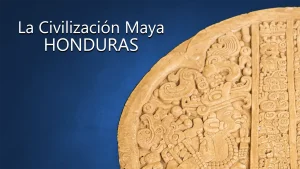Political Organization – Government – The Mayan Civilization
Return to the main article The Maya Civilization
In the Classic Period (290 to 909 AD), supreme rulers were given titles such as k’inich (‘solar face’), ahaw te (‘lord tree’), ch’ul ahaw (‘sacred lord’), or bakab (‘world upholder’). Other nobles related to the ruler were called ahaw (‘lord’). There were also rulers of secondary centers or cities, known as sahl (sahalo’ob, in plural), who pledged loyalty to the ahaw te’.
During the Terminal Classic (800 to 1000 AD) and Early Postclassic (909 to 1451 AD), another form of government emerged in the Yucatan Peninsula: the multepal or confederate government, with Chichén Itzá and later Mayapán as hegemonic cities. In the multepal, there was no single ruler, but rather governance was carried out by several individuals at once, who considered themselves «brothers.» Each member of the governing council (multepal) held the title of ah tepal.
After the destruction of Mayapán (1451), the Yucatan Peninsula fragmented into 16 or 17 independent provinces called kuchkabal. Each kuchkabal had its capital, where the halach uinik (true man) resided, holding military, judicial, and political authority. Each kuchkabal was divided into batabilo ‘ob (batabil, singular), which were governed by high-ranking officials known as batabo ‘ob (batab, singular).
The batabs pledged loyalty to the halach uinik and sometimes were their relatives. In turn, the batabil was divided into several kuchkteel or residential units. This organizational unit resided in a village and was divided into extended families. Their leaders would gather in a council to address governance matters, and it appears that the batab was also part of that council.
The councils of each batabil were composed of representatives of family interests: ah k’ulo’ob (ah k’ul, singular) and representatives appointed by the batab: ah kuch cabo’ob (ah kuch kob, singular). The kuchtabal of Hocabá-Homún and Calotmul did not have batabs; instead, the second level of government was carried out by holpop, officials appointed by the family heads of the kuchteelo’ob.
The halach uinik was the high priest of each kuchkabal. The ahaw kan may or ah k’in may followed in rank. The regular priests were called ah k’in, the sacrificers were ah nakom, the prophets were chilan, other priests of lower rank were chako’ob, and in modern Yucatán they are called hmen. The leaders or warrior captains were called nakom, although the batab also held a high military rank. In the highlands of Guatemala, the government of the Quiché was led by the ah pop, and the government of the K’iche’ was led by four officials called ago, although two of them exercised true power: the ahpotsots’il and the ahpoxahil.
Return to the main article The Maya Civilization
